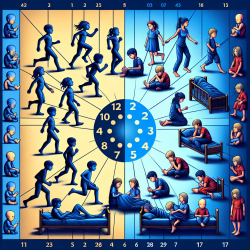The study of sleep patterns in children with varying refractive errors is gaining traction as researchers seek to understand the complex interplay between environmental factors and myopia. The research article "Sleep in Myopic and Non-Myopic Children" provides valuable insights that can help practitioners enhance their approaches when working with children who have different refractive conditions.
The Research Findings
The study conducted by Ostrin et al. (2020) involved 91 children aged 10 to 15 years, utilizing objective measurements of sleep, light exposure, and physical activity over two 14-day periods. Key findings include:
- Sleep Duration Variability: Myopic children exhibited more variable sleep duration compared to non-myopic children, influenced by factors such as day of the week and season.
- Sleep Latency: Myopic children had shorter sleep latency than their non-myopic counterparts.
- Seasonal Influence: All children experienced longer sleep durations during cooler seasons compared to warmer ones.
- Outdoor Time: Time spent outdoors was positively associated with longer sleep duration.
- Physical Activity: Increased physical activity was linked to earlier wake times.
Implications for Practitioners
The findings suggest several practical applications for practitioners working with children:
- Encourage Outdoor Activities: Given the positive correlation between outdoor time and sleep duration, practitioners should advocate for increased outdoor activities as part of a holistic approach to managing myopia.
- Create Awareness of Sleep Patterns: Understanding the variability in sleep patterns among myopic children can help tailor interventions that address specific needs related to their refractive status.
- Monitor Seasonal Changes: Being aware of seasonal influences on sleep can guide practitioners in adjusting recommendations for activities and routines throughout the year.
- Pursue Further Research: The study highlights the need for continued exploration into how environmental factors like light exposure influence both sleep and eye health. Practitioners are encouraged to stay informed about ongoing research developments in this area.
The Broader Context
This research underscores the importance of considering environmental and behavioral factors when addressing myopia in children. As myopia prevalence continues to rise globally, understanding these dynamics becomes crucial in developing effective interventions. By integrating these insights into practice, professionals can contribute to better health outcomes for children with myopia.
The relationship between circadian rhythms, light exposure, and refractive error development is complex but offers a promising avenue for future research. As practitioners continue to explore these connections, they can play a pivotal role in shaping strategies that support both ocular health and overall well-being in children.
Read the original research paper: Sleep in Myopic and Non-Myopic Children










